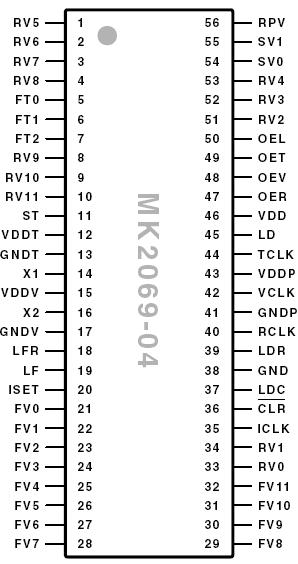MK2069-04: Features: • Input clock frequency <1kHz to 170MHz• Output clock frequency of 500kHz to 160MHz• Clock translation examples: T1 (1.544MHz) to/from E1 (2.048MHz) T3 (44.736MHz) to/...
floor Price/Ceiling Price
- Part Number:
- MK2069-04
- Supply Ability:
- 5000
Price Break
- Qty
- 1~5000
- Unit Price
- Negotiable
- Processing time
- 15 Days
SeekIC Buyer Protection PLUS - newly updated for 2013!
- Escrow Protection.
- Guaranteed refunds.
- Secure payments.
- Learn more >>
Month Sales
268 Transactions
Payment Methods
All payment methods are secure and covered by SeekIC Buyer Protection PLUS.

 MK2069-04 Data Sheet
MK2069-04 Data Sheet








